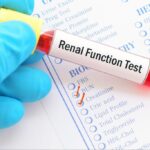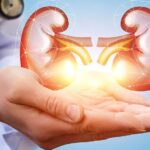Peripheral artery disease is the blockage or narrowing of arteries with a fatty acid plaque that constricts blood supply, especially to the limbs. If there is no implementation of lifestyle modifications and professional treatments to manage symptoms, PAD can result in reduced mobility, numbness of limbs, and eventually amputation.
The Psychological Impact of PAD
The severe physiological effects of peripheral artery disease significantly impact mental health, causing an emotional burden associated with managing the condition. PAD disrupts physical abilities and leads to uncertainty about the future prognosis, fear of potential complications, and reduced social interactions, all of which affect the overall quality of life.
Alleviation of Medical Conditions Through Nurturing Resilience
Resiliency is the only factor that helps patients cope with medical conditions without drawbacks. Nurturing resilience is the key ingredient that allows individuals to experience the happiness and healthiness of life. Resilience in PAD-diagnosed individuals helps mitigate the negative impacts on mental health, slow disease progression, and improve mental and physical well-being.
How Does Nurturing Resilience in Patients of PAD Lessen the Severity?
Nurturing resilience in patients with peripheral artery disease gives them the tools and mindset to cope effectively with the challenges. This includes exercising regularly, modifying their lifestyle, managing medications, and adhering to the recommended treatment plan.
1. Psychological Empowerment:
Increased levels of depression, anxiety, and uncertainty are expected in PAD patients. The situation worsens over time due to limited mobility and the potential for pain and discomfort. Nurturing resilience controls the condition and potential complications by promoting a determined and proactive attitude towards treatment, including medication usage, lifestyle modifications, and regular medical check-ups.
2. Enhancing Emotional Well-being:
Fear, frustration, and a range of emotions can contribute to the emotional burden on patients with PAD. Nurturing resilience fosters the development of healthy emotional coping strategies through self-care, engaging in physical activities that bring joy, and reducing the emotional burden and severity of PAD simultaneously.
3. Social Support:
Engaging in social support plays a significant role in managing PAD. Patients who isolate themselves due to restricted mobility often feel alone and overwhelmed. Seeking assistance, maintaining social support networks, and connecting with others with PAD offer insight, encouragement, and reassurance.
4. Adaptive Coping Strategies:
Nurturing resilience promotes adaptive coping strategies that enable patients to navigate the challenges of living with PAD effectively. This includes seeking social support, eliminating negative thoughts, and engaging in activities that help prevent future complications associated with PAD.
5. Physical Activity and Healthy Lifestyle Choices:
Resilience encourages a determined attitude towards betterment in individuals living with PAD. Stress, restricted mobility, and an unmodified lifestyle can worsen the symptoms of peripheral artery disease and contribute to further complications.
Conclusion:
Peripheral artery disease results in narrowing blood vessels in the lower extremities. The psychological impact of the disease can be more significant than the physiological impact. Nurturing resilience fosters stress management strategies, reduces mental and emotional burdens, alleviates symptoms of PAD, and enhances the overall quality of life while reducing the risk of future complications.




